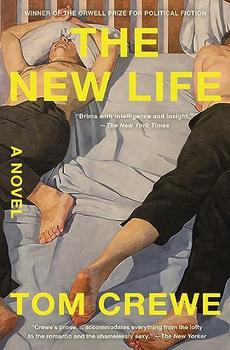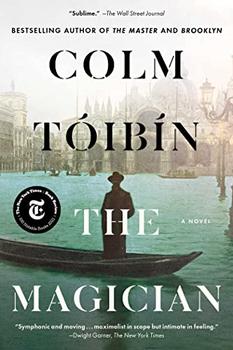Summary | Excerpt | Reading Guide | Reviews | Beyond the book | Read-Alikes | Genres & Themes | Author Bio

A Novel
by Tom Crewe"Well, gentlemen…I say it is time for facts to do battle with prejudice." So begins the crusade for justice that the protagonists of Tom Crewe's debut novel, The New Life, hope to embark upon together. Yet this journey is not to be — stymied by the period-typical homophobia of late-19th-century England at every turn, authors John Addington and Henry Ellis find themselves up against a wall. They are forced to face the very real possibility that their lives are on the line because of a book they have co-written. Sexual Inversion, the first English medical textbook on homosexuality, has been published at a time when homosexual acts – vaguely defined as "gross indecency" in legalese – are punishable by up to two years in prison with hard labor. It has also, by complete accident, been published just after famous author and playwright Oscar Wilde's trial (see Beyond the Book) and subsequent sentencing to those two years with hard labor. The memory of that trial hangs like a specter over our characters throughout the last third of the novel.
The presence of Wilde's trial, which took place in 1895, not only helps place the novel historically, but also provides context surrounding popular opinion on homosexuality at the time. Although he was not technically "out" as we would understand it today, Wilde was quite publicly affectionate with his partner, and before his trial, he was still the 19th-century version of a rock star. People were happy to ignore his sexuality in order to enjoy his wit, humor and wonderful writing — but once the trial made headlines, general opinion soured against him, showing the volatile, fickle nature of the British public.
From the start of the story, it is an unlikely partnership between Henry and John, but they each need the other to make their project work: Henry's credentials as a medical doctor help to frame the subject of homosexuality as a matter of legitimate scientific interest, rather than immorality, and John's publishing credits and relative fame within intellectual circles, to say nothing of his lived experience as a closeted gay man, give the book its weight. Henry, a straight man and a painfully shy young progressive, has recently married his friend and colleague Edith, a lesbian; they are not romantically or sexually involved and live apart in order to further the progressive dream of "The New Life," including equal choice, opportunity and freedom to men and women (this concept is based on the philosophy of an actual progressive group, the Fellowship of the New Life, influenced by the ideas of Henry David Thoreau and Ralph Waldo Emerson). John has been married for decades and has three grown daughters out of the house. Despite the relative success of his books on Ancient Greek and Renaissance history, he feels stifled and unfulfilled.
The protagonists of The New Life are based on two real-life figures — John Addington Symond and Havelock Ellis — who co-wrote a historical-scientific text called Sexual Inversion, just like in the novel. However, as Crewe mentions in his afterword, he fictionalized these figures through his characterization of their interactions. In reality, the two never met, communicating exclusively through mail, and Symond died before the book was published, whereas in The New Life, John Addington is very able to fight back against the injustice of his work being censored.
The characters of The New Life are all painfully real — they make selfish, rash choices, regardless of how their decisions may hurt those who love them. Despite those more negative qualities, many of them are fiercely lovable, and both their unrealized blunders and conscious actions may make readers grip the pages with fear and frustration. Frank (John's working-class lover) is one who ended the book as a favorite for me, though to be fair, he was one of my favorites throughout — he gives the story the much-needed grounded perspective of someone who did not grow up wealthy, like it seems many of the other characters did. On the other hand, there are certainly characters who make reading The New Life a somewhat frustrating affair, especially as significant choices must be made. By the end of the novel Henry was grating on me. I wonder if one's personal views on how to attain progress (cautiously waiting to fight another day versus going out in a blaze of glory) affect which narrating character — Henry or John — one favors.
Beyond his reluctance to pursue justice through a trial, Henry serves as an avatar for the limits of a progressive's acceptance. He brushes off those who are not as technically educated as he is, and actively notices clues to the newness of Frank's upper-class situation (thanks to his relationship with the wealthy John), such as his recently polished shoes and his seemingly out-of-place, lower-class London accent. Although the ideas Henry espouses stand for acceptance without question, it is clear from his tone that he is uncomfortable around those whose backgrounds differ from his own — something he must learn from throughout the course of the novel.
Crewe perfectly captures the futility sometimes felt by activists as progressive, justified change stagnates in the face of social ostracism and limited resources. This is not, necessarily, a happy story, but it is certainly one that needs to be told. Crewe's writing style, reminiscent of actual 19th-century novels in its offhand poeticism and deeply descriptive quality, is a joy to read, and The New Life is essential for anyone interested in the long history of the fight for LGBTQ+ rights and the genealogy of the queer community.
![]() This review was originally published in The BookBrowse Review in March 2023, and has been updated for the
February 2024 edition.
Click here to go to this issue.
This review was originally published in The BookBrowse Review in March 2023, and has been updated for the
February 2024 edition.
Click here to go to this issue.

If you liked The New Life, try these:

by Selby Wynn Schwartz
Published 2024
An exhilarating debut from a radiant new voice, After Sappho reimagines the intertwined lives of feminists at the turn of the twentieth century.

by Colm Toibin
Published 2022
From one of today's most brilliant and beloved novelists, a dazzling, epic family saga centered on the life of Nobel laureate Thomas Mann, spanning a half-century including World War I, the rise of Hitler, World War II, and the Cold War.
Use what talents you possess: The woods would be very silent if no birds sang there except those that sang best
Click Here to find out who said this, as well as discovering other famous literary quotes!
Your guide toexceptional books
BookBrowse seeks out and recommends the best in contemporary fiction and nonfiction—books that not only engage and entertain but also deepen our understanding of ourselves and the world around us.